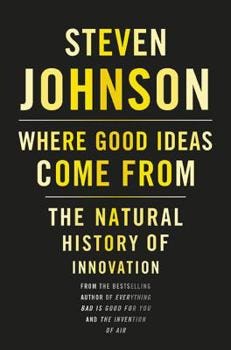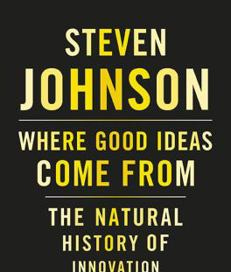Where ideas flourish: The ecosystem of innovation
Author Steven Johnson shares how collaboration and curiosity spark breakthroughs
Where Good Ideas Come From: The Natural History of Innovation
By Steven Johnson
Grade: 96

Steven Johnson’s Where Good Ideas Come From makes my short list of best books of the year. As a history, science, psychology, and economics junkie, I appreciated how he weaved together examples from disparate fields while highlighting how environments, networks, and interdisciplinary thinking shape the development of groundbreaking ideas.
If his goal was to demystify innovation, showing how it’s a collective and iterative process—relying on collaboration, the exchange of ideas, and the ability to see connections between seemingly unrelated fields rather than the product of sudden genius—he succeeded.
Ideas thrive in liquid networks
A key concept in Johnson’s book is the idea of “liquid networks,” which are environments where ideas flow freely, mingle, and evolve. In such networks, individuals and groups from different disciplines bring diverse perspectives, creating fertile ground for innovation.
“Chance favors the connected mind,” he writes, underscoring the importance of collaboration and exposure to varied ideas.
One example of a liquid network is the coffeehouse culture of 17th- and 18th-century Europe. Coffeehouses became hubs where thinkers from different fields gathered, exchanged ideas, and discussed new theories. These conversations often sparked innovations that shaped the modern world. Johnson contrasts this with more closed systems, where ideas are stifled due to lack of interaction or diversity.
The adjacent possible: expanding the boundaries of innovation
Johnson also introduces the concept of the “adjacent possible,” using it to describe the set of ideas and innovations that are achievable based on current knowledge and conditions. He likens it to a series of interconnected rooms: opening one door leads to new possibilities, which, in turn, open additional doors.
This concept is illustrated through the work of mathematician Henri Poincaré. Poincaré’s breakthrough, he writes, didn’t occur while he was laboring at his desk but during moments of mental rest—such as when boarding a bus or taking a walk.
These unstructured moments allowed his mind to connect disparate ideas, leading to his discovery of new mathematical methods.
Johnson explains, “Innovative environments expose us to more ‘hunch collisions’—the serendipitous coming together of ideas from different sources.”
Breakthroughs often come from interdisciplinary connections
The central message of the book—that many innovations arise from the combination of knowledge from different fields—resonates with me as a fan of biologist E.O. Wilson, who, in his 1999 book Consilience: The Unity of Knowledge, wrote of knowledge “jumping together“ as facts and fact-based theories across disciplines created common groundwork of explanation.
A great example is Johannes Gutenberg’s invention of the printing press; it was inspired by his knowledge of wine presses and coin minting. By borrowing ideas from these unrelated areas, Gutenberg created a technology that transformed communication and knowledge dissemination. Johnson calls this the “slow hunch” model of innovation: great ideas rarely come as sudden flashes of inspiration. Instead, they often develop over time as different hunches interact and eventually coalesce into something transformative.
He writes, “The history of innovation is replete with examples of ideas that developed not in isolation, but through the collision of smaller hunches.”
Error, serendipity, and collaboration fuel creativity
Another surprising insight in Johnson’s book is the role of error and serendipity in innovation. Mistakes often lead to unexpected discoveries, and being open to these “happy accidents” can spark creativity. For example, penicillin was discovered when Alexander Fleming noticed mold growing in a petri dish. Fleming’s willingness to investigate an unintended outcome led to one of the most significant medical breakthroughs in history.
“Good ideas are not conjured out of thin air,” he explains. “They are built out of a collection of existing parts, the composition enhanced by exposure to others.”
A must read for innovators and leaders
The author’s goal for the book was to encourage readers to rethink how they approach creativity and problem-solving, in part by helping them understand the conditions by which innovation is fostered, allowing individuals and organizations to create environments that allow good ideas to flourish. He succeeded.
Johnson’s core message is clear: innovation isn’t the product of isolated genius but a collaborative, iterative process fueled by diversity, connection, and curiosity.
“The more we connect, the more we innovate.”



